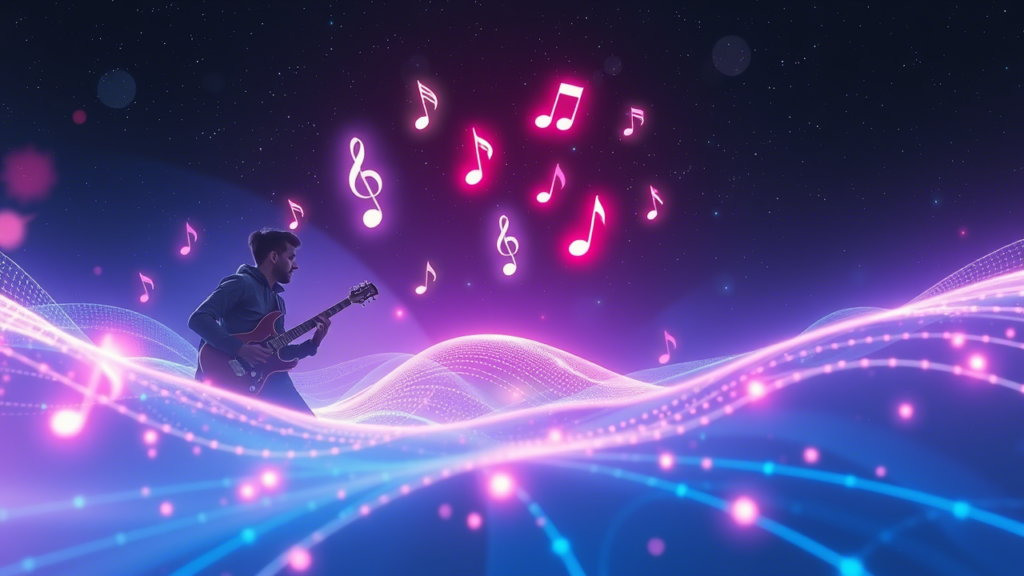The term harmonic ode has gained attention in recent years because it encompasses multiple disciplines, including music, technology, and philosophy. It serves as a bridge between artistic expression, computational logic, and the deep philosophical understanding of interconnectedness. Whether in sound engineering, coding, or existential thought, harmonic ode is crucial in shaping how we interpret harmony in different contexts.
This article explores the meaning and applications of harmonicode, shedding light on its relevance across various fields. We will break down its significance in music, delve into its role in software development, and examine its philosophical implications.
Biography Table for Harmonicode
| Attribute | Details |
|---|---|
| Full Name | Harmonicode |
| Field | Music, Technology, Philosophy |
| Meaning | The structured harmony found in sound, code, and existence |
| Applications | Music theory, AI-generated compositions, software development, philosophical studies |
| Key Concepts | Harmonics, overtones, digital sound processing, universal interconnectedness |
| Influence | Used in modern AI music composition, algorithmic sound design, and theoretical physics |
| Future Scope | AI-driven music production, quantum harmonic algorithms, neuroscience applications |
| Related Topics | Sound engineering, digital synthesis, mathematical harmony, cosmic patterns |
| Cultural Impact | Found in musical traditions, software coding principles, and spiritual philosophies |
What Is Harmonicode?
At its core, harmonic ode can be understood as a term that blends “harmony” and “code,” signifying structured patterns that create a balanced and interconnected system. It resonates with musicians, software developers, and philosophers alike.
- In music, harmonicode represents the intricate relationships between harmonics, the overtones that define a sound’s texture and depth. It is the essence of what makes each musical note unique.
- In technology, harmonicode is software that generates harmonic patterns, making it useful for music production, artificial intelligence-driven composition, and even digital sound synthesis.
- In philosophy, harmonicode symbolizes the interconnected nature of the universe, suggesting that everything operates rhythmically and systematically, much like musical harmonies.
Each aspect contributes to a broader understanding of harmonicode, making it a unique and fascinating subject.
Harmonicode in Music: The Science of Sound
Harmony is an essential element that brings compositions to life in the musical world. Every musical note carries hidden overtones, which vibrate alongside the fundamental tone. These overtones, known as harmonics, shape an instrument’s or voice’s timbre, allowing us to distinguish between different sounds.
How Does Harmonicode Work in Music?
- Understanding Harmonics—When a note is played, multiple frequencies resonate simultaneously. The fundamental frequency is the dominant sound, but additional overtones vibrate harmoniously. These frequencies form the harmonic series, essential in tuning and music composition.
- Musical Intervals and Chords – Harmony in music relies on intervals and chord progressions that follow specific mathematical patterns. Harmonicode can be used as a structured system to analyze and create harmonically rich compositions.
- Digital Sound Processing—Modern music production utilizes harmonic ode software to refine sound quality. Equalizers, synthesizers, and audio processing tools use harmonic algorithms to balance and enhance musical tones.
- AI and Music Composition—With advancements in artificial intelligence, harmonic ode is playing a vital role in automated music generation. AI-based composers analyze harmonic structures to create natural and emotionally engaging melodies.
Music theorists, producers, and sound engineers leverage harmonicode to develop innovative compositions that push the boundaries of traditional music-making.
Harmonicode in Technology: The Intersection of Code and Creativity
Beyond music, harmonicode extends into technology, particularly in software development and digital sound engineering. The ability to translate harmony into code has led to remarkable advancements in music production, artificial intelligence, and even virtual reality soundscapes.

Applications of Harmonicode in Software Development
- Music Production Tools—Several digital audio workstations (DAWs) incorporate harmonic ode algorithms to generate automatic chord progressions, harmonies, and sound effects. This assists musicians in composing more complex arrangements.
- Algorithmic Composition—AI-driven tools like OpenAI’s MuseNet or Google’s Magenta use harmonic ode principles to generate harmonized music. These systems analyze existing compositions and create new melodies based on mathematical harmony patterns.
- Sound Engineering and Acoustics – Audio engineers use harmonicode-based tools to fine-tune soundscapes. Whether adjusting frequencies in a recording studio or creating immersive audio experiences in gaming and VR, harmonicode plays a crucial role.
- Coding Music with Harmonic Patterns – Developers use Python and Max/MSP programming languages to write harmonic sequences that control synthesizers, create digital instruments, and even generate live performances.
Integrating harmonicode in software development has transformed how we experience and interact with sound in the digital world.
Harmonicode in Philosophy: The Code of the Universe
Philosophy has long explored the idea that everything in the universe operates in patterns and rhythms. Harmonicode embodies this concept by suggesting that harmony exists not only in music but also in nature, mathematics, and even human consciousness.
What Does Harmonicode Represent in Philosophy?
- Universal Interconnectedness—The philosophy of harmonic ode proposes that all things in existence are linked through a fundamental code of harmony. Just as musical notes resonate together to form a melody, every aspect of life is interconnected.
- Mathematical Patterns in Nature—The Fibonacci sequence, the golden ratio, and wave frequencies all illustrate harmonic patterns in the natural world. These patterns support the idea that the universe operates on harmonic ode principles.
- Balance and Resonance in Human Experience—Just as music requires a balance between dissonance and resolution, life involves challenges and harmony. The philosophy of harmonic ode suggests that finding equilibrium leads to fulfillment and inner peace.
- Spiritual and Mystical Perspectives—Many spiritual traditions, such as Buddhism and Hinduism, emphasize sound vibrations (mantras, chants) to align with cosmic harmony. Harmonicode can be viewed as a philosophical bridge between science and spirituality.
By applying harmonic ode to philosophical thought, we understand how patterns shape our external world and our inner consciousness.
The Future of Harmonicode
The influence of harmonic ode continues to expand, blending creativity, logic, and existential thought in unprecedented ways. With advancements in artificial intelligence, quantum computing, and neuroscience, harmonic ode could unlock new dimensions in music, technology, and human cognition.
Potential Future Applications
- AI-Composed Music – As AI improves, harmonicode may lead to entirely AI-generated compositions that rival human creativity.
- Neuroscience and Sound Therapy – Studying harmonic brainwave patterns could revolutionize mental health treatments.
- Quantum Computing and Harmonic Algorithms—The future of computing could use harmonic ode principles to process information in entirely new ways.
- Interdisciplinary Studies: Researchers from different fields may collaborate to explore how harmonic ode can improve learning, creativity, and problem-solving.
As technology and human understanding evolve, harmonicode will likely become integral to future innovations.

Climax
Harmonicode is more than just a term; it is a bridge connecting music, software development, and philosophy. From how sound vibrates to how the universe functions, harmonicode reflects an underlying order in the world around us.
- In music, it defines the harmonic structures that create beautiful compositions.
- In technology, it powers software that revolutionizes sound and creativity.
- In philosophy, it represents the interconnected nature of existence.
As we continue to explore the depth of harmonicode, its influence will shape discoveries in art, science, and thought. The harmony between these disciplines proves that everything, at its core, is part of a more fantastic, interconnected melody.
Whether you are a musician, developer, or philosopher, harmonicode offers a fascinating perspective on the world. How will you use its principles in your own life?

